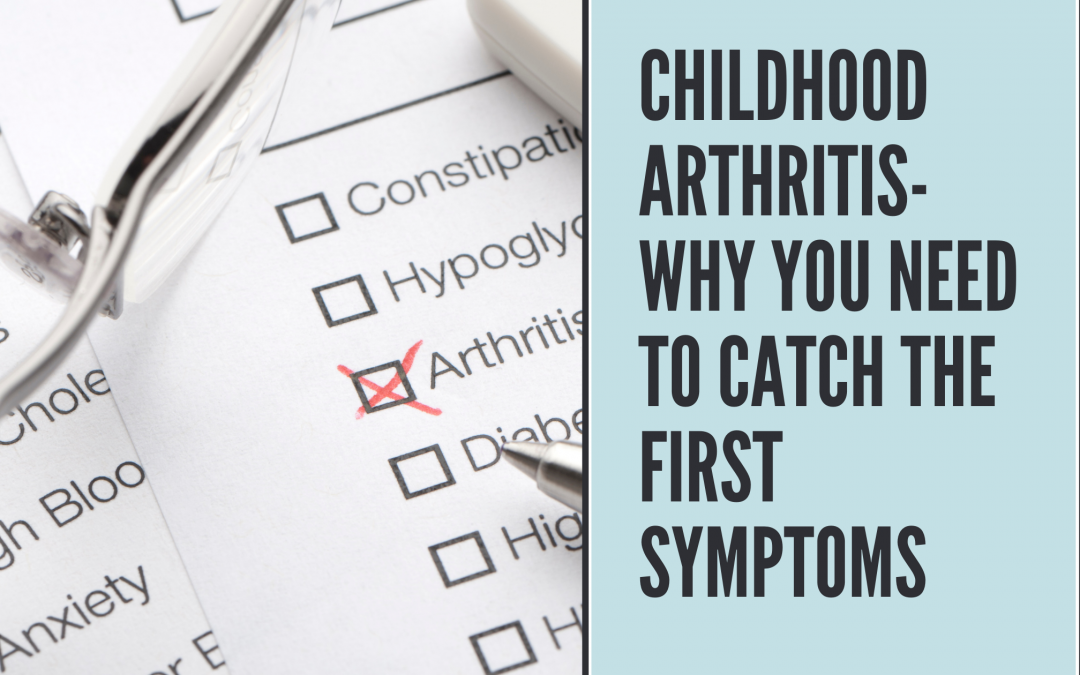Childhood arthritis? Children don’t get arthritis. True or false? Sadly, false. One child in 1000 has some form of arthritis. Stretching that out means nearly 300,000 kids in the US and more than 2 million worldwide are suffering!
To bring attention to this situation, World Pediatric Bone and Joint (PB&J) Day is held annually on October 19th. The message is that childhood arthritis is treatable for many kids. But, early medical attention is so important to children getting the proper care.
One of the big problems with this disease is that too many times a diagnosis comes late. Calls are not made to the family doctor until many weeks or months after seeing the first symptoms.
Child Arthritis Symptoms
The Mayo Clinic has a list of most signs and symptoms of juvenile idiopathic arthritis. That’s the most common form of childhood arthritis. Is your child complaining about any one of these problems? Don’t treat it like it is something that will quickly go away:
- Pain. While your child might not complain of joint pain, you may notice that he or she limps — especially first thing in the morning or after a nap.
- Swelling. Joint swelling is common but is often first noticed in larger joints such as the knee.
- Stiffness. You might notice that your child appears clumsier than usual, particularly in the morning or after naps.
- Fever, swollen lymph nodes, and rash. In some cases, high fever, swollen lymph nodes, or a rash on the trunk may occur — which is usually worse in the evenings.
Juvenile Idiopathic Arthritis
JIA usually happens to pre-school-age children or teenagers before their 16th birthday.
The cause? Unknown. Most likely a combination of genetic and environmental factors. What we do know is that Juvenile Idiopathic Arthritis is an autoimmune disease. Now, the immune system is what the body uses to fight back against injury, illness, or bacteria. Normally, the body does this by creating inflammation or swelling.
But when a child has JIA, the body, for some reason, creates inflammation in a joint or joints when it doesn’t need to. The pain and stiffness that a child feels are coming from this inflammation.
The problem here is that there are different types of Juvenile Idiopathic Arthritis. Symptoms vary between them. You will need a doctor to determine which types your child has. Then it will be easier to come up with a plan to help your child manage the situation.
Often, there is a good outcome for kids with childhood arthritis. But In at least 30% of cases, arthritis can stick with children into adult life.
Some young adults with JIA have:
- Joint damage that limits their daily activities to some extent
- Joints that may need replacements
- A physically smaller body than average
- Fragile bones (osteoporosis) as a result of arthritis and/or treatment with steroids
What treatments will your doctor and JIA team come up with for your child? Drugs, surgery, physiotherapy, and occupational therapy are all options.
The most important thing we want to leave you with is that Juvenile Idiopathic Arthritis is treatable. Know the symptoms. If you see them, get in touch with your family doctor right away!
Want to Know More About Childhood Arthritis?
We also found this website which has info about what to expect if your child has JIA. It also is helpful with advice about what you and your child can do now to make things better.
Check out The Arthritis Foundation. Lots of good JIA info. Especially good to read is a section on how parents can talk to their children about arthritis.
The Arthritis Foundation also has a program of summer camps and support groups around the United States. These are great for kids with juvenile arthritis to meet and talk to each other. Due to COVID-19, the Arthritis Foundation is not currently hosting in-person Connect Groups. Contact the Arthritis Foundation for info on the Virtual Connect Group.
This post was written by Anthony M Scialis. Find him here.

